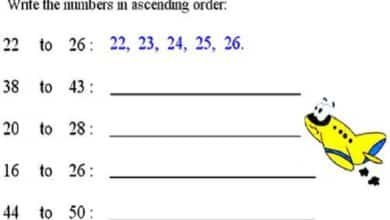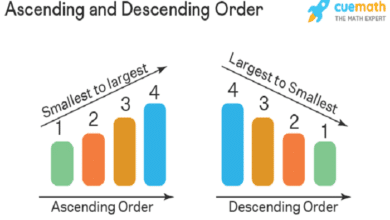
Introduction
Ascending order is a fundamental concept in mathematics and everyday life, essential for organizing data and ensuring clarity in communication. Understanding what ascending order means can enhance your problem-solving skills and improve data management.
What is Ascending Order?
Ascending order refers to arranging numbers or elements from the smallest to the largest. This sequence increases in value, ensuring each subsequent element is greater than or equal to the one before it. For example, the numbers 1, 2, 3, 4, and 5 are in ascending order.
Importance of Ascending Order in Mathematics
In mathematics, ascending order is crucial for simplifying complex problems. Whether working with basic arithmetic, algebra, or advanced calculus, understanding ascending order helps in organizing data, making comparisons, and performing calculations efficiently.
Applications in Everyday Life
Ascending order isn’t just for mathematicians. It’s used in everyday tasks like organizing a shopping list, scheduling tasks by priority, or arranging files by date. Recognizing what ascending order is can streamline various aspects of daily routines.
Ascending Order in Data Management
In data management, sorting data in ascending order can reveal trends and patterns, making analysis easier. For instance, arranging sales data from lowest to highest can help identify the most and least popular products, aiding in business decision-making.
Using Ascending Order in Computer Science
Computer algorithms often use ascending order to optimize performance. Sorting algorithms like Bubble Sort, Quick Sort, and Merge Sort rely on the principle of ascending order to organize data efficiently, ensuring faster processing and retrieval times.
Ascending Order in Statistics
In statistics, arranging data in ascending order is essential for calculating measures like the median, quartiles, and percentiles. By understanding what ascending order is, statisticians can accurately interpret data and draw meaningful conclusions.
Teaching Ascending Order to Students
Educators emphasize the importance of ascending order when teaching basic math concepts. Understanding ascending order helps students grasp number sense, sequencing, and logical thinking, forming a foundation for more advanced mathematical learning.
Visual Representation of Ascending Order
Graphical representations, such as line graphs and bar charts, often display data in ascending order to highlight trends clearly. Knowing what ascending order is allows one to interpret these visuals accurately and gain insights from the data presented.
Challenges in Understanding Ascending Order
Despite its simplicity, some might struggle with the concept of ascending order, especially when dealing with negative numbers, fractions, or complex data sets. It’s important to practice and familiarize oneself with different scenarios to master this skill.
Practical Exercises for Mastering Ascending Order
To get better at arranging data in ascending order, practice with various exercises. Start with simple lists of numbers and gradually move to more complex data sets. Understanding ascending order will become intuitive with consistent practice.
Conclusion
Understanding what ascending order is and how to apply it is invaluable across various fields and everyday activities. From simplifying mathematical problems to enhancing data analysis and organization, mastering ascending order can lead to more efficient and effective outcomes.
FAQs
1. What is ascending order in simple terms? Ascending order is the arrangement of numbers or elements from the smallest to the largest.
2. Why is ascending order important in data management? It helps in revealing trends and patterns, making data analysis easier and more insightful.
3. How do sorting algorithms use ascending order? Algorithms like Bubble Sort and Quick Sort arrange data in ascending order to optimize processing and retrieval times.
4. Can ascending order include negative numbers? Yes, negative numbers can be arranged in ascending order from the most negative to the least negative.
5. How is ascending order used in everyday life? It’s used in tasks like organizing lists, scheduling, and arranging files to ensure clarity and efficiency.





